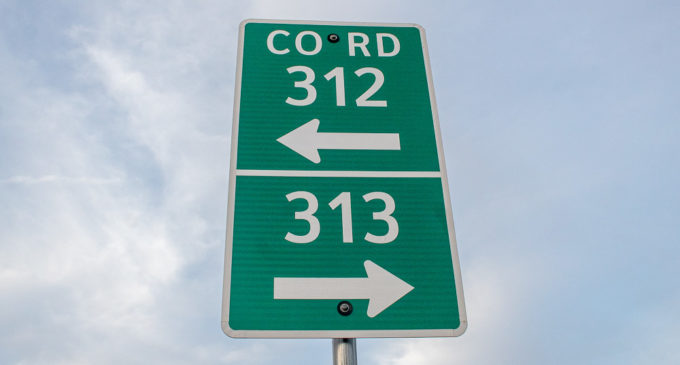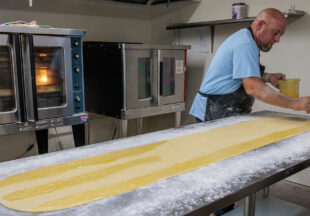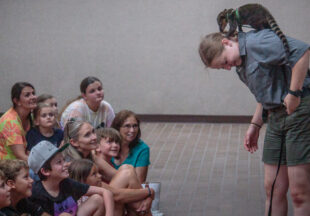County Commissioners considering lowering speed limits on county roads

Following an initial discussion in January, Stephens County Commissioners are considering lowering the speed limit on all county-maintained roads to 30 miles per hour in rural areas and 20 miles per hour in urban areas of the county. The Commissioners Court will hold a public hearing next month to take comments from the public on establishing the uniform speed limit.
The public hearing will begin at 9 a.m. Monday, March 11, in the District Courtroom in the Stephens County Courthouse. It will be open to the public for comment on the proposed speed limit change for county roads.
The reduced speed limits will not apply to other non-county roads, such as state or U.S. highways, farm-to-market roads, city streets, etc. Those will still be under their current speed limits.
Speed limit signs will be required
Although the 30 or 20 mph speed limits will apply to all county roads throughout Stephens County, the speed limits will only be enforceable in areas where the county has posted signs. On all other county roads, the speed limits will not be enforceable, according to county officials.
Currently, the State of Texas law sets the speed limits on most rural county roads at 60 mph and on most urban county roads at 30 mph. Those speed limits are enforceable – even without signage – because they are set by the state and are covered in the Texas Driver Handbook.
Counties and cities have the right to alter the speed limits on their roads, within guidelines set by the state, but the lower speed limits are enforceable only when signs are present alerting drivers to the lower speed limits.
According to Stephens County Attorney Gary Trammel, the 30 or 20 mph speed limits on Stephens County roads will be enforceable only in the areas where the county puts up signs.
“If they don’t post it, they can’t enforce that speed limit,” Trammel said. “(Without signs) by law, it’s not enforceable. The only way it would be is if they go out and spend the money for the road signs and actually post it.”
Stephens County Judge Michael Roach agreed and said that just because commissioners pass the order, it does not automatically make the new speed limit enforceable.
“You have to have all the signage correct in order to do that,” Roach said. “So what you’ll have is only certain roads in the county where’s there’s risk. On those roads, there will be speed limit signs that will be posted, but not every road in the county will be enforceable to that speed limit.”
Proposed speed limit to be set at 20 or 30 miles per hour
If adopted, the law will set the speed limit to 30 mph for most county roads, except for any that are near urban areas and then it will be set at 20 mph. Roach said in order for a road to qualify for the 20 mph speed limit, it will have to meet the definition of “urban” as defined by state law, and he doesn’t believe there are any roads in the county that will meet that definition.
Texas law provides the following definition:
“Urban district” means the territory adjacent to and including a highway, if the territory:
(A) is not in a municipality; and
(B) is improved with structures that are used for business, industry, or dwelling houses and located at intervals of less than 100 feet for a distance of at least one-quarter mile on either side of the highway.
Limited enforcement
According to county officials, if the proposal is passed, the reduced speed limits will technically apply to all county-maintained roads but signs will only be posted – and the speed limits enforced – on a few of the roads that are deemed most in need of slower speeds.
Roach said that, if the order is adopted, it will give commissioners the authority to work with constituents in their precincts to determine which county roads need posted speed limits and then post signs in those areas. He said examples of the type of roads that may need the speed limits are some of the roads that are near the lake where a lot of children live along the roads.
The speed limits would be focused on certain high-risk roads in the county and a majority of the county roads would not be affected by the speed limits, the county judge said. For example, pumpers going out to check wells are not going to be subject to the 30 mph speed limit on most roads, just in areas where there are posted speed limits, he said.
Additionally, the new speed limits could be applied to only certain stretches of specific county roads, such as an area on a road where there are multiple houses together with children living there, Roach said. The risks to the children from vehicles driving by at 60 mph, combined with the dust caused by the fast moving vehicles, could be a reason that area would have 30 mph speed limit set.
The reason the commissioners have chosen to propose a county-wide speed limit but only post signs in certain areas is to allow the roads chosen for speed limit signs to be done on a case-by-case basis, Roach said. Otherwise, any time in the future that a commissioner and the citizens in that precinct decide to adopt the speed limit and post signs on a road, or section of road, they will have to hold another public hearing.
“What would happen is, if you just adopted one road and said ‘Hey, we we’re going to have a public hearing on County Road 121; the first two miles there is a bad area we want to do that.’ Well, you would have to come back to the court over and over again, have public notice, public hearings and do it all over again every time you went to address a piece of road,” he said.
Additionally, Stephens County Sheriff Will Holt said deputies have very limited options on enforcing traffic laws on county roads. He said none of the roads have stripes on them showing the lane to stay in or posted speed limits. And, he said, because many of the roads are dirt and there’s a lot of dust on them, when vehicles travel on the roads, it limits deputies’ visibility to see traffic violations.
Proposed speed limits result of complaints
Roach said the topic of posting speed limits on select county roads was put on the agenda at the Jan. 7 Commissioners Court meeting by Precinct 1 Commissioner Ed Russell. He said Russell told commissioners at that meeting he has had several complaints of speeders from constituents with families and small children who live along county roads and said it is posing a danger to the children.
Holt said the Sheriff’s Office also gets a lot of complaints about a very small number of county roads.
“Another way of saying that is, we do not get a lot of complaints about all the county roads, or the majority of the county roads,” he said. “But, there are a handful of county roads that we get lots of complaints from people who live on those roads and travel on those roads on a daily basis about speeding and reckless driving.”
Holt said there are only about 10 to 12 county roads that they get consistent complaints from the public about vehicles speeding down, drug transactions occurring on them and just reckless driving in general. He said there’s a high volume of complaints for the same roads over and over but it’s obviously a small number of roads compared to the amount county roads that are in the county.
One thing he said that has to be factored in, is that some county roads are in residential neighborhoods like at the lake and certain parts of the county right on the edge the city limits.
“We don’t get complaints about people speeding up and down county roads that are out in the middle of nowhere where nobody really lives,” he said. “Where we get the complaints, that people are speeding or driving recklessly, are on county roads that have house after house after house on them. Where kids are playing, people are trying to walk their dog and those kinds of things. Predominately at the lake and predominately just outside the city limits.”
Specifically, the 12 country roads that the Sheriff’s Office receives the most complaints regarding speeding vehicles and reckless drivers, according to Holt, are: 176, 197, 198, 224, 225, 229, 241, 262, 269, 274, 278 and 315.
“This is about a very small number of select county roads that are heavily traveled where we get the majority of our complaints about speeding and reckless driving,” Holt said. “And most of those roads are in neighborhoods around the lake or just outside the city limits…If commissioners court moves forward with this and they post a speed limit, then we just enforce the law like we would any other law. So we’re not out to generate revenue or anything like that. We’re out to make sure people are traveling as safely as possible on the roads.
“There’s a handful of county roads that get almost all of the complaints about speeding,” the sheriff continued. “And if you go talk to citizens on those roads, I can tell you they would for sure tell you they want speed limit signs up and they want the deputies out there enforcing because it’s something that negatively affects their life almost every day.”
Implementing and educating the public on new speed limits
Holt said part of the process of implementing the new speed limits will be educating the public about the new speed limit signs. He said they will probably have a time period where they will only give warnings on speeding, and then after a certain amount of time it will be up the discretion of the deputy on whether or not they issue a citation instead of a warning.
Other benefits of speed limit enforcement
In addition to controlling speed on the roads, Holt said, the traffic stops could be also be used in helping apprehend criminals who use the back roads to enter and exit the city. He said traffic stops are one of the leading ways to detect, deter and apprehend people engaged in much more serious crimes.
“That will allow us to control speeding on those roads, and it will also help us catch habitual offenders, drug users, drug dealers that are traveling on those back roads to avoid the main city streets and main highways. It will help us catch them and get them off the street,” he said.
Story by Tony Pilkington/Breckenridge Texan
Carla McKeown contributed to this article































































































